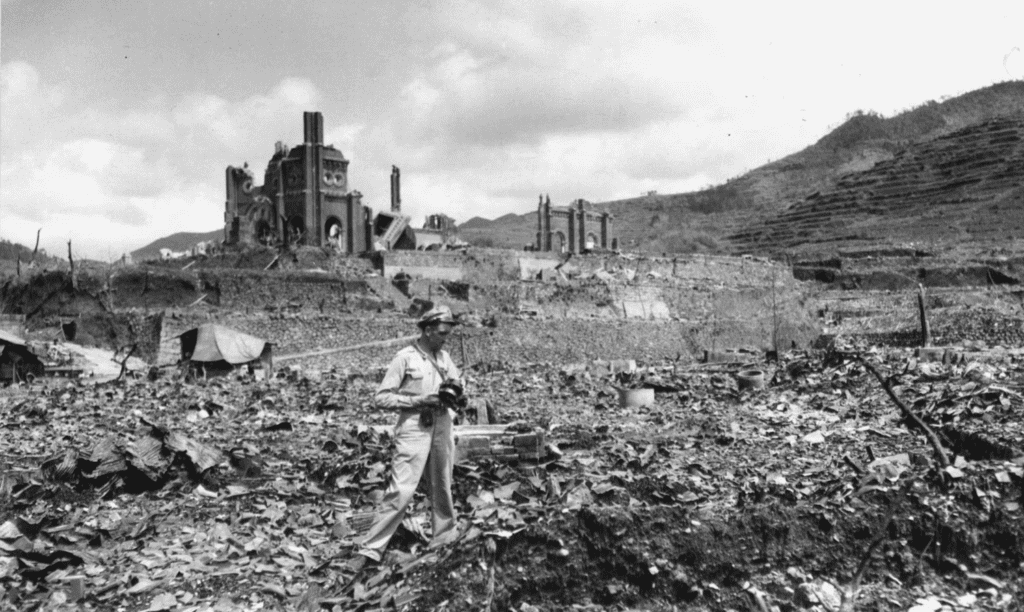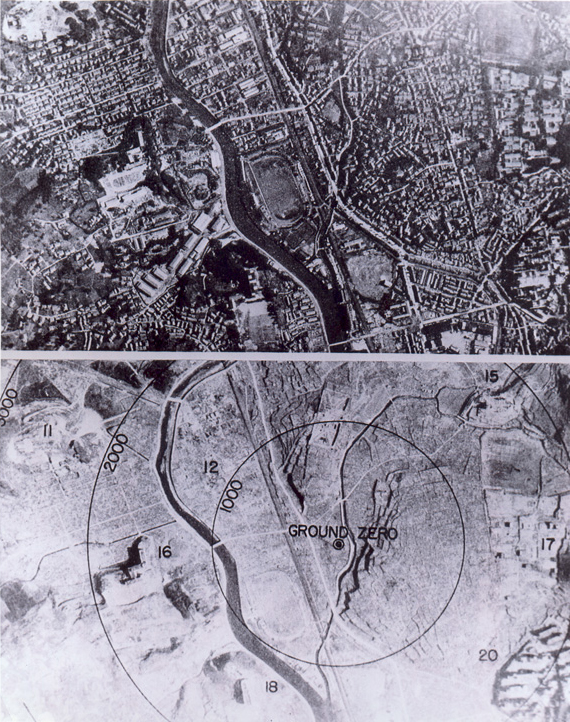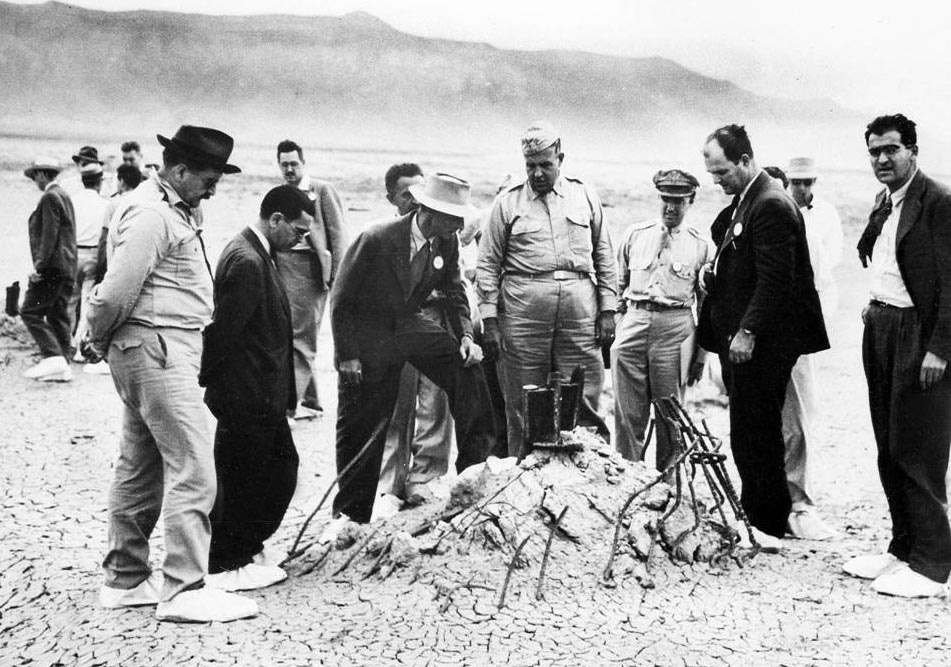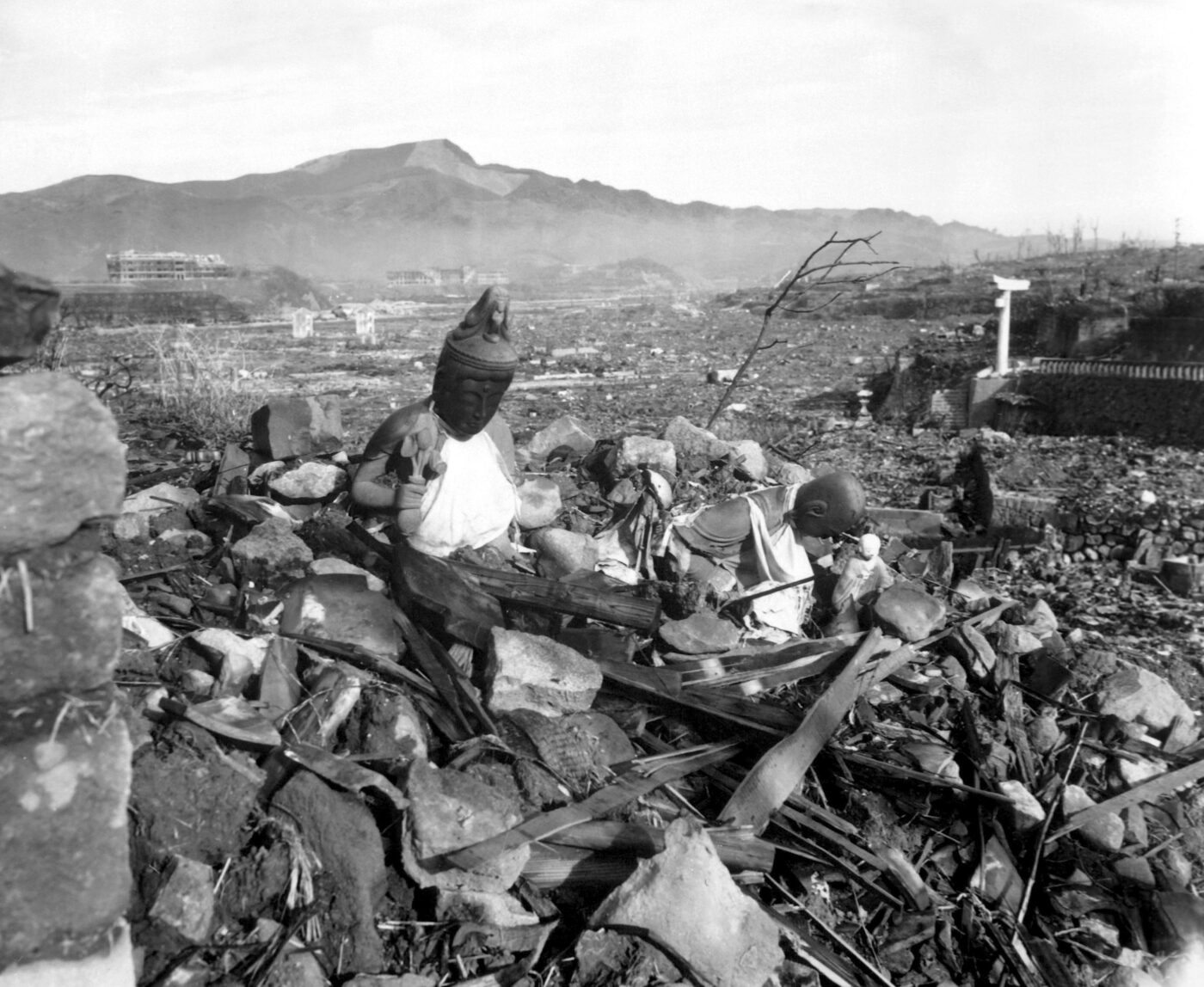Burned black as coal
countless rise, dead souls
In the dead of night
from the atomic bombing mandala.
They are piled atop one another high
And the ground will never dry.
It is soaked with the fat of all the people who burned and died.
Tsutomu Kawaguchi (Translated by Chad R. Diehl)
Only a few months ago a nuclear disarmament meeting took place in Nagasaki. The city is known as the second and last victim of the deliberate nuclear attack by the United States. These bombings of 1945 took the lives of at least 200,000 people. Those who managed to survive suffered the consequences of anything you can name: radiation sickness, cancer, hair loss, blindness, and some faces and bodies unrecognisable from the burns for the rest of their lives.
It was emphasised at the meeting “that the city [Nagasaki] should be the last to suffer an atomic attack to keep in sight of the goal of a world without nuclear weapons.” However, some political leaders still find it amusing to joke around about the use of nuclear weapons and carelessly fling threats about nuclear armament. A clear example of this is Putin’s statement in 2018: “Russians would ‘go to heaven as martyrs’ while everyone else would ‘just drop dead”. In 2022, when he was called out for the latter statement he said “I did that on purpose to alarm you” and that “The effect has been achieved”. Putin’s most recent statement in 2024 still sticks to his style: “(Western nations) must realise that we also have weapons that can hit targets on their territory. All this really threatens a conflict with the use of nuclear weapons and the destruction of civilisation. Don’t they get that?!” This was his response to French President Macron’s comment regarding the possibility of deploying NATO troops in Ukraine to ensure that Russia does not win the war.
Even US President Joe Biden joked with some factory workers, though admittedly in a tamer way and not targeted at specific countries, that his marine carries codes that can “blow up the world”. Perhaps a lighthearted joke—but was it necessary in the current geopolitical context?
As North Korea keeps on testing their nuclear weapons, Kim Jong Un leaves the world questioning his latest statement that the DPRK would “even [initiate] a nuclear attack when the enemy provoke[s] it with nukes”.


Tsutomu Yamaguchi, the man who lived (twice)
There is one man who would likely not appreciate Putin’s and Kim Jong Un’s threats or Biden’s joke, and that is Tsutomu Yamaguchi—the only man in the world formally recognised as the survivor of both the Hiroshima and Nagasaki nuclear bomb attacks.
Tsutomu Yamaguchi was born in 1916 and died in 2010. He lived 93 years. Looking at the date of his birth and the date of his death one can think that he was just a man who enjoyed a prolonged life. Yet, his 93 years of life were full of pain and suffering after he experienced both the Hiroshima and Nagasaki bombings when he was only 29 years old.
On the 6th of August 1945, when the first bombing happened, he was on a work trip in Hiroshima. He was within a 3 km radius from where the first atomic bomb landed. He immediately lost his hearing and went temporarily blind. His body and face were unrecognisable from the burns he endured. People who were in Hiroshima that day were absolutely confused about what had happened. Tsutomu recalls seeing just one plane, unlike many previous attacks that had always included dozens of bombers. No one could have thought that the reason for all the destruction was an atomic bomb. As Yamaguchi was trying to reach the train station to go back home to Nagasaki, he saw piles of dead blackened corpses of men, women, and children stuck to each other in the river.
On the 9th of August, he was back home in Nagasaki. With bandages all over his body, he had to return to work at Mitsubishi. His colleagues in Nagasaki were in disbelief as he described all the horrors that had happened in Hiroshima three days ago. Then the second bomb dropped. Yamaguchi was injured again, but less severely—he got lucky. He reunited with his wife and son, who also managed to survive that day. The following years of his life were spent battling radiation poisoning. He forever lost hearing in one ear.
Later in life, he considered his survival as a sign to speak up against nuclear weapons. He said: “My double radiation exposure is now an official government record. It can tell the younger generation the horrifying history of the atomic bombings even after I die”.
In 2009 he was recognised by the Japanese government as a “double hibakusha”—a person who twice survived the atomic bombing. In 2010 the first official translation of his poetry to English describing the horrors of 1945 was published under the title “And the River Flowed as a Raft of Corpses”.


The forgotten victims of the Trinity test site
More recently, Christopher Nolan’s film “Oppenheimer” has been widely acclaimed by viewers and reviewers. It holds a strong 8,4 rating on one of the Internet’s largest film databases, IMDb, and has brought in close to one billion dollars in revenue since its release. A critic for the New York Times described it as “a brilliant achievement in formal and conceptual terms”. The film followed Robert Oppenheimer’s fascinating life, ultimately leading him and his colleagues to develop the first atomic bomb at the Los Alamos Laboratory.
However, not to take away from Nolan’s successful cinematographic portrayal of Oppenheimer’s great scientific achievements, the film did not capture the years of pain and suffering that the nuclear weapon’s detonation at the Trinity site in New Mexico brought upon the local Native American and Hispanic population living in the surrounding areas. They are known as “downwinders”—the people living in the fallout zones of the nuclear test. They were given no warning about the nuclear test, and many suffered severe health consequences from the emitted radiation for the rest of their lives. The Tularosa Basin Downwinders Consortium, TBDC, was established by the descendants and relatives of those who lived in the surrounding areas of the testing sites. Their mission is to bring justice, knowledge and compensation to the victims of the Trinity test. To this day, they cannot claim financial compensation from the United States government for their suffering. One of the downwinders, Paul Pino, lost many members of his family to cancer because of the Trinity test. They succumbed: his brother to stomach cancer, his sister to thyroid cancer, and his mother to bone cancer. Tina Cordova, who founded TBDC, tried to get in touch with Nolan’s team so they could acknowledge the “downwinders” suffering in the film. The filmmakers were not interested in meeting them.


Threats and jokes, but what next?
One can argue that nuclear weapons play the role of deterrence. If I have nuclear weapons and you have nuclear weapons should we really engage in conventional warfare? Emmanuel Macron stated just a month before Russia’s full-scale invasion of Ukraine in February 2022: “We believe French nuclear deterrence is a way to protect European interests”. For the EU nations bordering Russia who are nervously following the developments in Ukraine, such a security guarantee should only be good news. But relying on an arsenal of nuclear weapons is nothing but a double-edged sword. Even in a world where nukes have the goal of deterrence, not destruction, who is to say that one man’s egocentrism won’t destroy the entire planet? As history is written, we cannot say that the political leaders of tomorrow will be as cool-headed and rational regarding nuclear weapons as today. As was the case of Nazi Germany, many autocracies were previously democracies. Should we truly leave weapons of mass destruction in the hands of the unknown future?
Are nuclear weapons really a topic political leaders should treat as a joke?
By Anna Fomina and Joosep Raudsepp
March 19, 2024
This article is an opinion piece whose contents represent the standpoint of its author and not UPF Lund or The Perspective’s editorial board.








